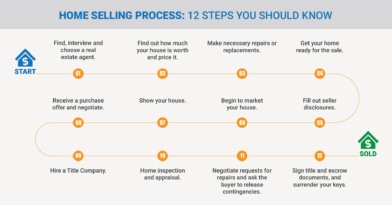15 Essential Steps for Moving to a New City
- Local Editor:Local Editor: The HOMEiA Team
Published: Oct 11, 2021
- Category: City Living Guide

Moving across town to a new home or apartment is hard enough. You’ll be packing, cleaning, lugging things back and forth, and running here and there to sign agreements or attend closings. If you’re moving to a new city, though, the process is even more complicated. Without the ability to make a quick trip here and there, you’ll need a detailed plan to keep everything running smoothly.
This guide to relocation will help you make a plan and check all the boxes so your move will be as painless as possible.
Table of Contents:
- 1. Find a new place to live.
- 2. Sell your home or end your lease.
- 3. Schedule movers.
- 4. Plan to switch schools.
- 5. Start sorting and packing.
- 6. Plan your healthcare.
- 7. Change your address with the post office.
- 8. Notify everyone of your new address.
- 9. Make arrangements for your utilities.
- 10. Get ready for moving day.
- 11. Clean up.
- 12. Make the trip.
- 13. Move in.
- 14. Get familiar with your new location.
- 15. Update your ID and registrations.
1. Find a new place to live.

Once you’ve decided to move, you’ll need to do some research on your new city to find the right neighborhood for you and your family. City guides are a good place to start.
If you plan to buy a home, find a good real estate agent who can work with you from a distance. Tell your agent about your needs when it comes to your commute time, neighborhood preferences, and how much you can afford to spend on a house payment.
If possible, visit your new community in person to tour houses or apartments. If you have kids, this may also be a good opportunity to check out public or private schools in your target neighborhoods.
Once you’ve signed a lease or had your offer accepted, you can start to work out the timing for your move. You’ll get the keys to your new home at closing, which you’ll typically attend in person, so plan to be in the new city that day — either on a visit or moving in.
Home Selling Process: 12 Steps You Should Know
Whether you plan to sell your house on your own or hire a real estate agent, the home selling process is very similar throughout the United States. Only a few details vary among states. Here are 12 important steps to expect in the process…
2. Sell your home or end your lease.

If you’re renting now, talk to your landlord about ending your lease. Be prepared to pay a fee for breaking the lease; in most cases, it will cost you less than continuing to pay rent after you leave.
If you own your home, find a real estate agent who can help you sell it. Then start decluttering and getting the house ready to list. You may want to box up rarely used items and rent a storage unit to keep them out of the way.
When it comes to negotiating the closing date with your buyer, make sure you work out an appropriate timeline. In most cases, you’ll have to be moved out of the house when you close, and you’ll be expected to attend the closing in person.
The timing can get complicated when you’re selling one home and buying another, but you have options. One is called a lease-back, and it’s when you close on the house but pay rent to the new owners in order to continue living in the home for a set period of time. This arrangement could help you avoid the need for in-between accommodations.
Another possibility is to sign the closing documents ahead of time in front of a notary. If you’re able to do so, you can move before the closing without having to return to sign papers.
Recommended for you
3. Schedule movers.
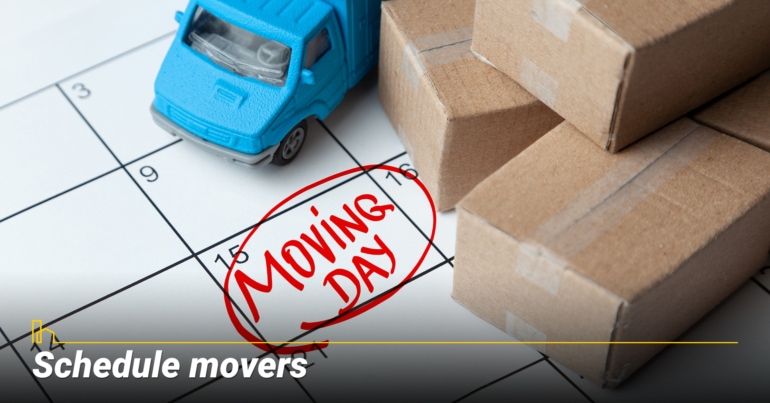
In most cases, a long-distance move will require professional movers. Call a few companies to get estimates and get your move date scheduled on or after the closing date or lease start for your new home. (If you get to town earlier, you’ll need temporary storage and a place to stay.)
Decide how to handle your vehicles. Will you drive to your new city? If your family has more than one car, will you have multiple drivers, or do you need to sell a vehicle or pay to have it transported?
4. Plan to switch schools.

If you have kids, call their schools – old and new – and arrange for their records to be transferred. Your new school can tell you how to enroll. Be sure to notify the schools of the children’s first and last days.
If you’ll need daycare or before- or after-school care, this is the time to arrange it.
5 Factors that Affect the Value of Your House
For many, selling their home, and especially pricing it for a sale, can be quite emotional. Besides the memories, there’re all types of investments that have invested into the home. However, if they can understand the factors that affect the market value of their homes, they’re often better equipped to deal with the reality. Let’s go over these 5…
5. Start sorting and packing.

Packing up a house is not a last-minute project. To make it manageable, do a little bit at a time. Donate items you don’t want to move, throw out anything that isn’t worth donating, and use up perishable items.
Keep your most valuable belongings separate; you may want to take them in your own vehicle. Make a list of the things you’ll need up to the last minute.
Acquire whatever supplies you’ll need for the move, such as boxes, tape and bubble wrap.
6. Plan your healthcare.

Figure out what providers are covered under your new plan, if you have one, and ask for referrals. Once you’ve found a new doctor, dentist, etc., contact your current provider to have your records transferred.
Make a plan to stock up on prescription medications before the move, in case there is a delay in your ability to get them filled.
Recommended for you
7. Change your address with the post office.
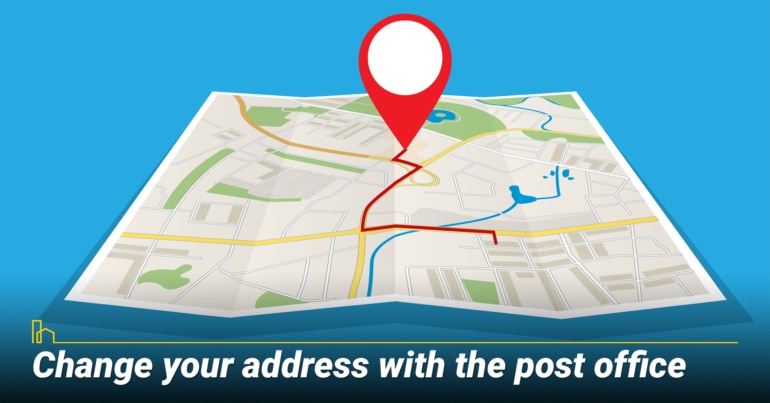
In the U.S., request a Moving Guide packet at your local post office and submit the change-of-address form – or, for a small fee, change your address online or at usps.gov. The postal service will forward mail to your new address for a limited time period.
8. Notify everyone of your new address.
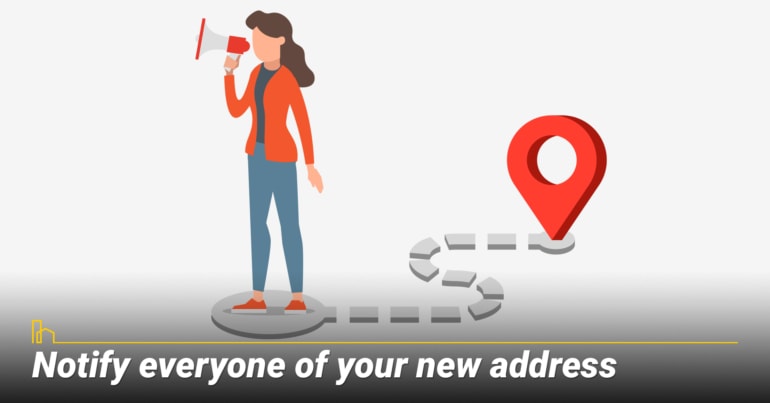
Update all of your contacts and your accounts with your new address. This includes banks and brokerages, lawyers and financial advisers, your current HR department, insurance companies, credit card companies, close friends, family, alma maters, and so on.
Update your mail subscriptions – not only magazines and newspapers, but any company that delivers to you regularly.
20 Clever Ways to Increase the Value of Your Home
If you’re thinking of selling your house, you’re undoubtedly also thinking about the value of your home and how the market will treat you in terms of a reasonable selling price. We’ll discuss here some ideas for minor to moderate…
9. Make arrangements for your utilities.
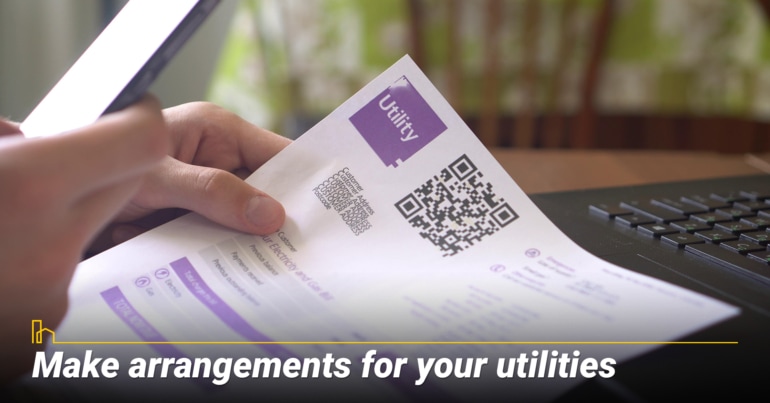
Call your utility companies – electric, gas, cable, etc. – and let them know the date you’ll be ending service or switching it to the new occupant.
Contact the utilities in your new place, too, so you can be sure everything is hooked up and running when you arrive.
10. Get ready for moving day.

Confirm the date with your moving company, and make sure they have your contact information and any special directions. Figure out how you will pay the movers, including a tip.
Gather your valuable items and make sure they don’t get lost in the shuffle. If you have a safe deposit box, retrieve your items so you can transport them.
Finish packing everything the movers will transport and get rid of anything left that isn’t coming with you. Will your furniture fit through the doors of your new home? No need to move a sofa across the country if it won’t fit through the door.
If you’re driving, make sure your vehicle is ready to go, tuned up and with properly inflated tires and a full tank of gas.
Pack suitcases for everyone in the family with the things you’ll need for the first few days.
Recommended for you
11. Clean up.

Once the movers have packed everything away and you’ve signed the paperwork, it’s time to clean.
If you’re renting, you’ll probably need to leave the place in broom-swept condition and follow any checklist provided by your landlord to make sure you won’t lose your security deposit.
If you’re selling your house, you’ll need to meet any requirements in the purchase agreement, plus complete a basic dust-and-vacuum out of respect for the new occupants.
12. Make the trip.

Load up the car and say goodbye! If you’ve done your planning and there have been no unpleasant surprises, the trip itself should be simple. Just make sure you have all the necessities in the car with you, just as you would for a vacation, in case something goes wrong with the movers and you don’t get the rest of your belongings right away.
The Beginner’s Guide on How to Buy a House
In this article, we’ll discuss those key steps to confidently buying your first home. We’ll also look at several professionals who can help guide you on the journey, so all the details are handled correctly and professionally. Let’s get started on your next adventure…
13. Move in.

Once you have the keys to your new place, you can move in. Make sure you’re around when the movers arrive so you can direct them where to put all of the furniture and boxes.
Take your time with unpacking; it doesn’t have to be done right away, and you may need some time to de-stress first. Expect to get takeout or go out to eat for the first few meals.
When you do start unpacking boxes, be thoughtful about where you put things; they tend to stay in the first place you put them.
14. Get familiar with your new location.

Figure out where all the necessities are located: the grocery store, 24-hour store, gas station, hospital, bus stop, etc.
Get familiar with your HOA, if you have one, and its policies. Plan your routes to work and school. Take walks and chat with your new neighbors.
If you’ve moved to a new region, familiarize yourself with potential natural disasters and establish safety plans.
Don’t forget to have fun! Find a new favorite coffee shop, library, restaurant, bar or park.
10 Important Features to Consider When Buying a House
In this article, we’ll discuss about things to consider when buying a new house. Each will rank differently in importance for individual buyers, but all points are worth examining. If you haven’t already thought seriously about these factors, now is your chance. Let’s check it out…
15. Update your ID and registrations.

If you’re in a new state, you’ll need to make a trip to the DMV for a new driver’s license and vehicle registration.
You’ll also need to update your voter registration to make sure you can vote in your new district.
Moving to a new city is very stressful, but making a plan and sticking to it can help you minimize your anxiety and keep things from falling through the cracks. A big move can also be a big adventure!
Here is the PDF form where we make a list of these 15 things for you to print out and check off as you are preparing for your move. We wish you a all the bests and a safe trip to your new home.
Tips and Templates to Evaluate Single-Family Homes
In this article, we’ll discuss how to organize like a pro and weigh in on the good, the bad and the ugly for every house you are viewing. With strategy and organization, you’ll be able to actually enjoy the home buying process. After all, you want to find the best home for your situation…
Table of Contents:
- 1. Find a new place to live.
- 2. Sell your home or end your lease.
- 3. Schedule movers.
- 4. Plan to switch schools.
- 5. Start sorting and packing.
- 6. Plan your healthcare.
- 7. Change your address with the post office.
- 8. Notify everyone of your new address.
- 9. Make arrangements for your utilities.
- 10. Get ready for moving day.
- 11. Clean up.
- 12. Make the trip.
- 13. Move in.
- 14. Get familiar with your new location.
- 15. Update your ID and registrations.
HOMEiA is a city guide site where visitors can find detailed information about communities of interest. HOMEiA’s City Guides, created in partnership with local writers and editors, are curated lists of the best, safest, and most affordable places to live. The guides feature the HOMEiA Score, a proprietary index that rates communities on such factors as housing costs, education, employment, etc.
HOMEiA.com aims to be the premier site for people planning to relocate, providing them with insightful content and connecting them with skilled real estate professionals.
We also empower real estate professionals to establish or strengthen their web presence by highlighting their experience, knowledge and achievements. If you’re selected to join our list of certified real estate professionals, you will distinguish yourself from your peers — and earn HOMEiA’s support.
If you believe in HOMEiA’s mission, please share our website with others.
Table of Contents:
- 1. Find a new place to live.
- 2. Sell your home or end your lease.
- 3. Schedule movers.
- 4. Plan to switch schools.
- 5. Start sorting and packing.
- 6. Plan your healthcare.
- 7. Change your address with the post office.
- 8. Notify everyone of your new address.
- 9. Make arrangements for your utilities.
- 10. Get ready for moving day.
- 11. Clean up.
- 12. Make the trip.
- 13. Move in.
- 14. Get familiar with your new location.
- 15. Update your ID and registrations.

